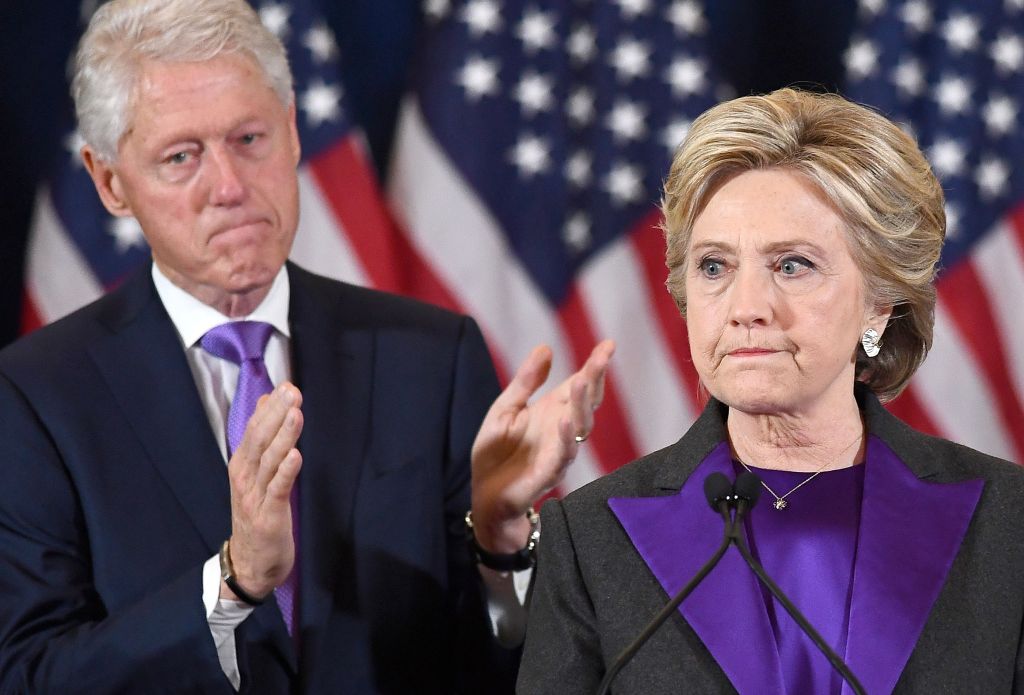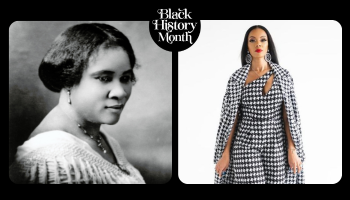
Source: JEWEL SAMAD / Getty
According to the NPR, According to Democratic presidential candidate Hillary Clinton finds herself on the wrong end of an electoral split, moving ahead in the popular vote but losing to President-elect Donald Trump in the Electoral College, according to the latest numbers emerging Wednesday.
As of 2 p.m. ET, Clinton had amassed 59,626,052 votes nationally, to Trump’s 59,427,652 — a margin of 198,400 that puts Clinton on track to become the fifth U.S. presidential candidate to win the popular vote but lose the election.
In a presidential election, the popular vote simply means an aggregate of all voters from all states in America. It is quite possible that a candidate wins the popular vote (i.e. gets more votes over all) and yet loses the presidential election. This is because although Americans vote directly for their chosen candidate in the presidential election every 4 years, the president is elected by the institution called the Electoral College.
How Electoral Votes are Awarded
In all states except Nebraska and Maine, electors are awarded on a winner-take-all basis. This means all electors/delegates in a state are awarded to the winner of the popular vote in that state.
Maine and Nebraska use a slightly different method for allocating electoral votes. In the “Congressional District Method”, one elector within each congressional district is selected by popular vote in that district. The remaining two electors (representing the 2 U.S. Senate seats) are selected by the statewide popular vote. This method has been used in Nebraska since 1996 and in Maine since 1972.
Disadvantages of the Electoral College
Critics of the system that uses the electoral vote to choose a president argue that the system is unfair. They say that the system is undemocratic because the number of electoral votes is not directly proportional to the population of the state. This gives smaller states a disproportionate influence in presidential elections. For example, Hawaii has a population of only 1.36 million but has 4 electoral votes while Oregon has a population 3 times that size (3.8 million) but only 7 electoral votes. If the power of a single vote were calculated in terms of number of number of people per electoral vote, states like New York (519,000 people per electoral vote) and California (508,000 people per electoral vote) would lose. The winners would be states like Wyoming (143,000 people per electoral vote) and North Dakota (174,000 people per electoral vote).[1]
Another criticism is that the electoral vote system does not penalize a state for low voter turnout or for disenfranchising its citizens (such as convicted felons, or, historically, slaves and women) The state gets the same number of votes regardless of whether voter turnout is 40% or 60%. In a popular vote, states with higher turnout will directly increase their influence in the outcome of the presidential race.
Yet another criticism is that it discourages voters in states where one party holds a substantial majority i.e. Republicans in typically blue states like California or Democrats in red states like Texas. Since electoral votes are awarded on a winner-take-all basis, even a significant minority of contrarian votes will not make any impact on the outcome of the election. On the other hand, if a popular vote were to be used then every single vote has an impact.
Advantages of the Electoral Vote over a Popular Vote
Supporters of using the electoral vote argue that it protects the rights of smaller states and is a cornerstone of American federalism. States can design their own mechanism — without federal involvement — for choosing their electors.
Another advantage is that the impact of any state-level problems, such as fraud, is localized. No political party can commit large-scale fraud in any one state to dramatically influence an election.
It should be noted that the Electoral College merely follows from state influence in Congress, which enacts laws and acts as an inherent checks-and-balances mechanism for the president’s administration. That is to say representation for various states in Congress is also not directly proportional to their population.
Different Winners of Electoral and Popular Vote
The biggest criticism of the electoral vote system is that it is possible for a presidential candidate to win the popular vote and lose the electoral vote. That is, more Americans voted for the candidate but he or she still lost. While this is rare, it has happened now 5 times:
Donald Trump (electoral vote winner) vs. Hillary Clinton 2016: As of 2 p.m. ET, Clinton had amassed 59,626,052 votes nationally, to Trump’s 59,427,652 — a margin of 198,400 that puts Clinton on track to become the fifth U.S. presidential candidate to win the popular vote but lose the election.
George Bush (electoral vote winner) vs. Al Gore in 2000: Al Gore won the popular vote by 543,816 votes
Benjamin Harrison (electoral vote winner) vs. Grover Cleveland in 1888
Rutherford B. Hayes (winner) vs. Samuel J. Tilden in 1876: Tiden won the popular vote by 264,292 votes
John Quincy Adams won the electoral vote in 1824 but lost the popular vote to Andrew Jackson by 44,804 votes in 1824
Research and statistics are found here: http://www.diffen.com/difference/Electoral_Vote_vs_Popular_Vote and http://www.npr.org/sections/thetwo-way/2016/11/09/501393501/shades-of-2000-clinton-surpasses-trump-in-popular-vote-tally
Secretary Hillary Clinton Wins the Popular Vote But Not the Electorate College was originally published on praisedc.com















